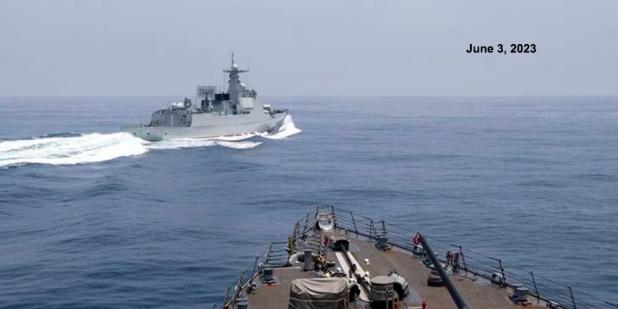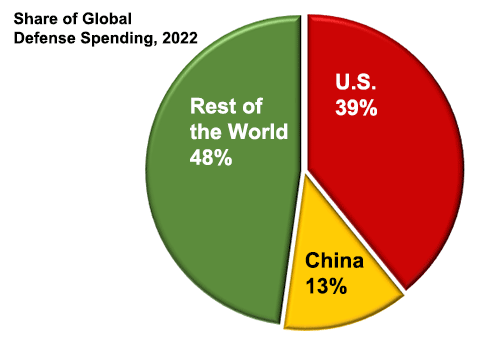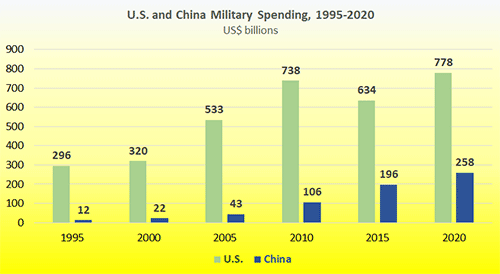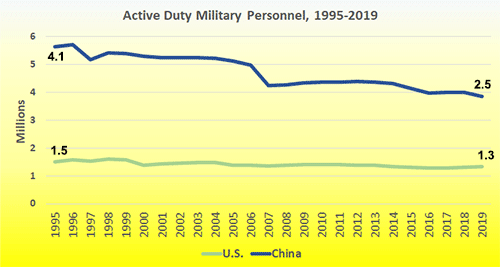Happy Lunar New Year from the USC US-China Institute!
China's PLA Day Approaches

On August 1, China celebrates the 1927 founding of the Communist Party’s People’s Liberation Army. The PLA has shrunk in active duty troops, but in recent years has become much more modern and capable. It’s charged with defending land borders China shares with fourteen countries and protecting the country’s interests abroad. In 1999, Brookings scholars, reflecting the current strategic consensus, described China’s military as “hollow” and wrote “An enormous gap separates China’s military capabilities from its aspirations. The PRC’s armed forces are not very good, and not getting better very fast.” Over the next two decades, China invested heavily in modernizing its training and resources and is now seen as possessing the ability to not just defend the country, but to advance its interests including those created through its great leap outward.
Washington has increasingly seen China as strategic rival in Asia and beyond. Since 2002, the U.S. Congress has mandated that the Department of Defense focus on Chinese military power and to produce an annual report on its perceived aims and capacity. The most recent report highlights China’s successes in strengthening its military and notes, “The PRC’s leaders view U.S. security alliances and partnerships, especially those in the Indo-Pacific, as destabilizing and irreconcilable with the PRC’s sovereignty, security, and development interests.” China’s become an increasing focus for the National Security Strategy reports issued by presidential administrations. Last fall, the Biden administration’s report argued that China and Russia “seek to remake the international order to create a world conducive to their highly personalized and repressive type of autocracy.”
For its part, China says it is pursuing peaceful development and that its military advances are purely defensive in nature. The 2019 Chinese government white paper on defense strategy says the U.S. has “provoked and intensified competition,” particularly in Asia. Focusing on Taiwan, it says “the fight against separatists is becoming more acute.” It reaffirms aims outlined by Xí Jìnpíng 习近平 “to fully transform the people’s armed forces into world-class forces by the mid-21st century.” In March, Xi described this as building “a great wall of steel.”
It’s worth remembering that in the 1970s and 1980s, in the context of the Cold War rivalry with the Soviet Union, the U.S. helped modernize China’s army and China permitted the U.S. to operate listening posts in Xinjiang. In fact, then Senator Joe Biden discussed this effort with Chinese authorities in a April 1979 visit to China. In 1984, Pres. Ronald Reagan authorized the sale of weapons to China.
Times have definitely changed. The U.S. military complains that Chinese ships and planes (as in the U.S. Navy photo above from the Taiwan Strait) are sometimes coming dangerously near U.S. ones. China responds that it is the American presence near China that is provocative.
This week also brings the 70th anniversary of the end of the Korean War, when American and Chinese soldiers fought each other. On July 27, 1953, the Korean War Armistice Agreement was signed. Most of the three million people who died in the war were Korean civilians. South Korea reported that more than 160,000 of its soldiers were killed or went missing. The U.S. lost more than 40,000 troops. Officially, China had over 180,000 who were killed or died from illnesses. North Korean military losses are estimated to be over 300,000. The Cold War turned brutally hot in Korea and did much to harden the divide between the U.S. and China.
*****
With the two largest economies, the U.S. and China are the biggest military spenders. Combined, they outspend the rest of the world.

USCI chart utilizing data from the Stockholm International Peace Research Institute (SIPRI).
U.S. military spending continues to outpace China’s (foreign analysts argue China’s published figures are significantly lower than real expenditures). The U.S. has military bases and base access worldwide. Japanese and South Korean allies provide significant funding for the 55,000 and 28,500 American soldiers stationed there. The U.S. also has bases in Guam and other Pacific territories and has renewed access to facilities in the Philippines.

USCI chart drawing on World Bank, U.S. Dept. of Defense and SIPRI data.
China has had the world's largest military, but it is much smaller than it once. Xi Jinping, in addition to being General Secretary of the China's Communist Party, is chair of the Party's Central Military Commission. In 2016, state media began to refer to him as Commander in Chief 总指挥 (zǒngzhǐhuī). In 2015, Xi announced a force reduction of 300,000. China has almost twice as many soldiers as America, but has a it has a smaller share of its citizens under arms than the U.S. The Chinese total does not include informal and unarmed forces sometimes mobilized to pressure neighbors.

USCI chart based on data from the World Bank and the U.S. Dept. of Defense.
Other resources: USCI's military affairs document collection and a US-China Today infographic comparing China's military with those of its neighbors and the U.S. USCI has hosted several presentations by specialists focusing on China's military (for example, on PLA influence in policy making).
Watching Barbie

The first Barbie film opened last Friday in the U.S. and many other places, but not Vietnam. In the U.S. so far, the film has earned $214 million. In China, it has brought in $14 million. The film won’t be officially screened in Vietnam owing to an impressionistic map that seems to include dotted lines similar to those China mandates on its maps of the South China Sea. The Vietnamese government banned the film. USCI’s Clayton Dube discussed this with KCRW. USCI’s short documentary on the contested region is here. USCI’s document collection includes a variety of reports and statements on the region.
Image courtesy of Warner Bros
Featured Articles
We note the passing of many prominent individuals who played some role in U.S.-China affairs, whether in politics, economics or in helping people in one place understand the other.
Events
Ying Zhu looks at new developments for Chinese and global streaming services.
David Zweig examines China's talent recruitment efforts, particularly towards those scientists and engineers who left China for further study. U.S. universities, labs and companies have long brought in talent from China. Are such people still welcome?






